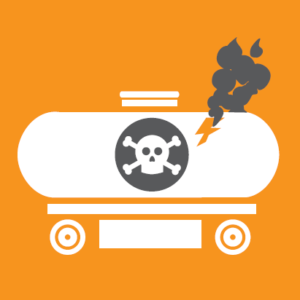 There is always potential for an outdoor hazardous materials release in any downtown area. In most cases, it is best to seek appropriate shelter in a building unless directed otherwise by first responders. Self-evacuation may actually put you in harms way. Getting stuck in grid lock while evacuating would increase your danger of exposure.
There is always potential for an outdoor hazardous materials release in any downtown area. In most cases, it is best to seek appropriate shelter in a building unless directed otherwise by first responders. Self-evacuation may actually put you in harms way. Getting stuck in grid lock while evacuating would increase your danger of exposure.
These steps are designed to protect you against potentially harmful gases:
- Move inside a building immediately.
- Close and lock all windows and doors.
- Turn off ventilation systems. Facilities Services will shut down most HVAC systems as appropriate. Look for window units or report if ventilation appears to be working at your location by calling the Facilities emergency number 865-946-7777.
- If possible, enter an interior room above ground level and seal the room (doors, windows, and vents) with towels, plastic, or tape for further protection.
- Monitor all forms of campus alerts and media for further instructions.
- Be prepared to evacuate if directed by emergency personnel.

Photo showing the interior of a room and how to seal its doors, windows, vents, and fans in case of a chemical accident outside.
Emergency responders have trained and prepared for incidents involving chemical spills. They will help you, but it will take time for them to arrive. You need to protect yourself for the first few minutes. Be alert and prepared.
If you have been instructed to shelter, do not decide to evacuate instead. Some areas of campus may get different instructions depending on the scope of the incident.
If you believe you may have been exposed to a hazardous chemical or you feel unusual, seek medical attention as soon as possible. Remove any clothing that may have been contaminated. Call 911 to report your symptoms and get guidance on the nearest medical facility appropriate for your treatment.